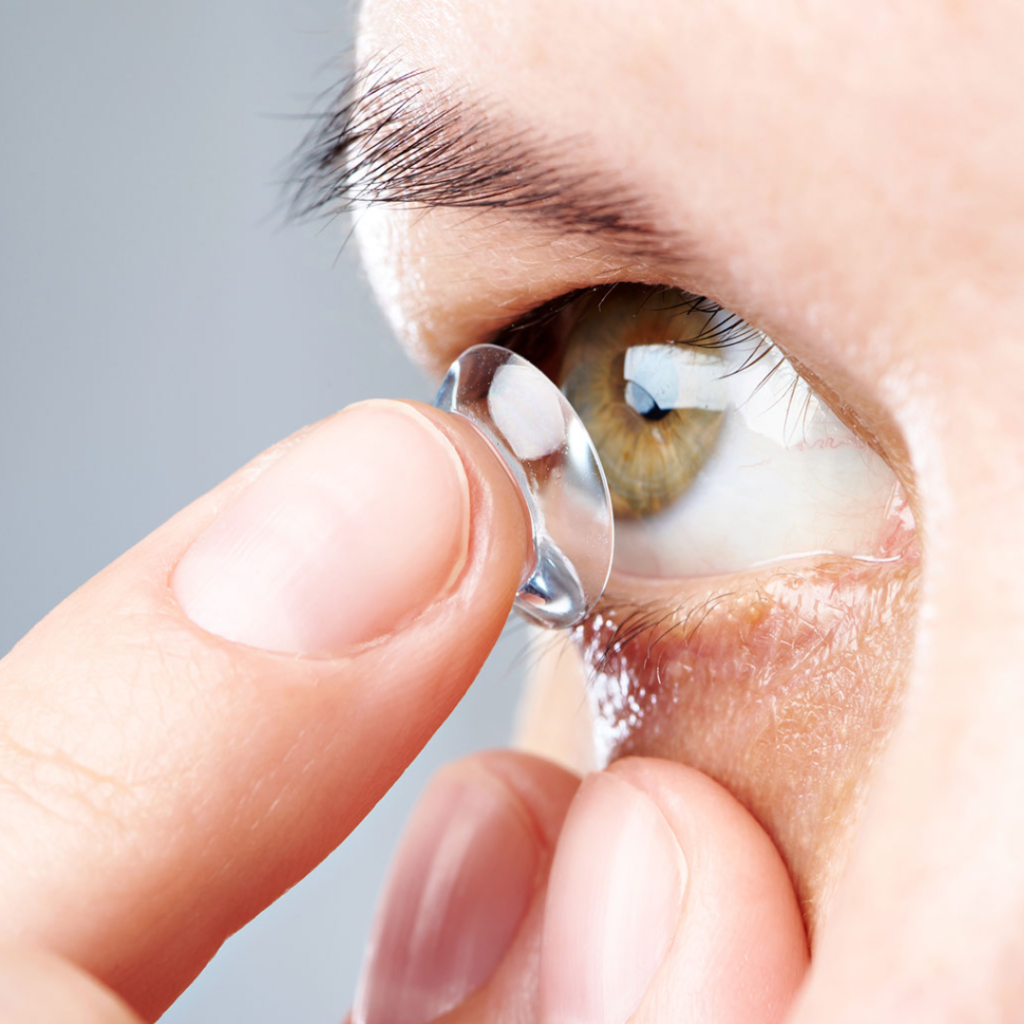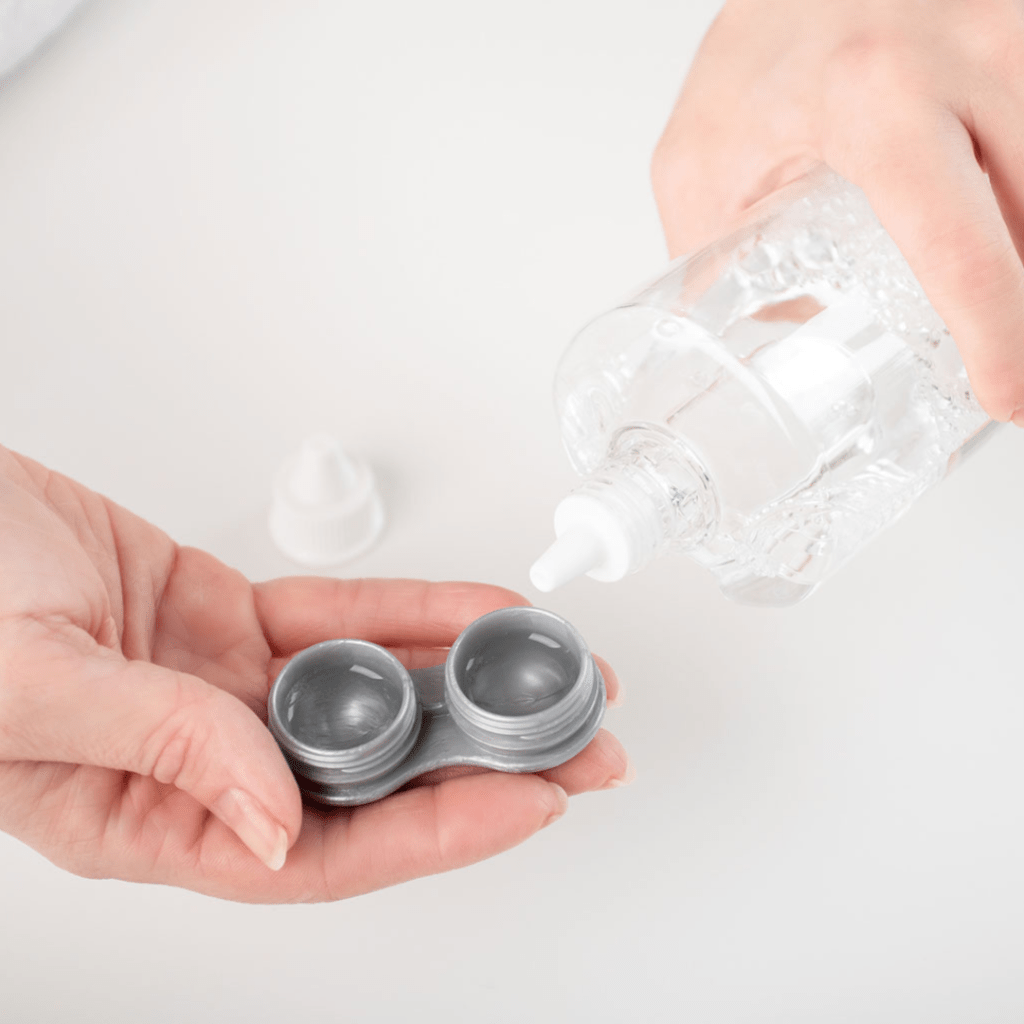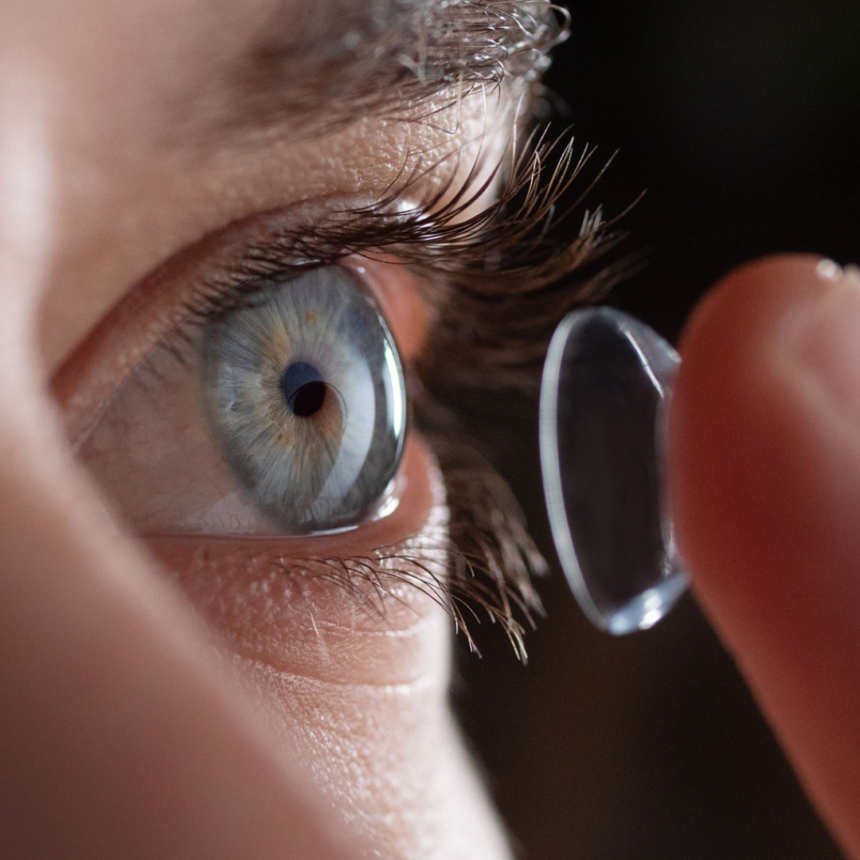Contact lenses are a popular option for people who have vision problems. They come in many different types and materials, with different features and benefits. In this blog, we’ll talk about the different types of contact lenses, how to wear them, and how to care for them.
Types of Contact Lenses:
Different types of contact lenses are available to cater to the diverse needs of individuals. These include daily disposable, monthly disposable, extended wear, soft toric, rigid gas permeable (RGP), hybrid, and decorative contact lenses. Let’s take a closer look at each type.
Daily Disposable Lenses:
Designed for single-day use, these lenses are discarded after each use. They are convenient for individuals with busy lifestyles who do not want to clean and store lenses.
The advantage of daily disposable lenses is that they eliminate the need for cleaning and reduce the risk of infection.
However, the disadvantage is that they can be more expensive than other types of lenses.
Monthly Disposable Lenses:
You can wear these lenses for a month and then discard them. They are cost-effective and convenient for individuals who do not mind cleaning and storing lenses.
The advantage of monthly disposable lenses is that they are more affordable than daily disposable lenses.
The disadvantage is that they require cleaning and storage, which can be time-consuming.
Extended Wear Lenses:
Individuals who don’t wish to remove their lenses daily can wear these lenses for up to a week without removing them.
The advantage of extended wear lenses is that they allow for extended use without removal, providing greater convenience.
The disadvantage is that they can increase the risk of infection, and may require more frequent visits to the eye doctor for check-ups.
Soft Toric Lenses:
Individuals with astigmatism can use lenses designed specifically for them, which are available in daily, monthly, and extended wear options. People with low to moderate prescriptions can wear soft contact lenses daily or for an extended period of time.
The advantage of soft toric lenses is that they provide improved visual acuity for individuals with astigmatism.
The disadvantage is that they are not as durable as other types of lenses, and may be more prone to tearing or damage.
Rigid Gas Permeable (RGP) Lenses:
These lenses are made of a harder material that allows for more oxygen to reach the eyes. They are ideal for individuals with more severe vision problems and are available in various shapes and sizes.
The advantage of RGP lenses is that they provide improved visual acuity for individuals with severe vision problems.
The disadvantage is that they can be less comfortable than other types of lenses, and may require a longer adjustment period.
Hybrid Lenses:
These lenses are a combination of soft and gas-permeable lenses and are indicated for individuals who have high refractive error but prefer the comfort of soft lenses.
The advantage of hybrid lenses is that they provide improved visual acuity and comfort.
The disadvantage is that they can be more expensive than other types of lenses.
Decorative Contact Lenses:
These lenses are used for changing eye color and are classified as cosmetic lenses.
The advantage of decorative contact lenses is that they can provide a cosmetic effect.
It is important to obtain decorative contact lenses with a prescription from an eye care professional. If purchased from sources like the internet or drug stores without a prescription, proper instructions, and follow-up care, they can cause serious complications like eye infections and permanent vision loss.
INDICATIONS FOR USING CONTACT LENSES:
Contact lenses are used as an alternative to eyeglasses for correcting various vision problems such as nearsightedness (myopia), farsightedness (hyperopia), astigmatism, and presbyopia. Contact lenses can also be used for cosmetic purposes, such as changing the color of the eyes.
Besides the common refractive errors, certain corneal conditions, such as keratoconus, also require contact lenses in vision correction.
Keratoconus is a progressive condition in which the cornea becomes thin and starts to bulge out in a cone-like shape. This change in the cornea’s shape affects light refraction, leading to blurred or distorted vision. Hard Rigid Gas Permeable (RGP) lenses can be a solution for those with keratoconus to improve their vision.
In general, contact lenses are indicated for individuals who require vision correction and find eyeglasses to be inconvenient or uncomfortable. They are also suitable for individuals with active lifestyles who participate in sports and other physical activities.
Wearing Contact Lenses: A Step-by-Step Guide

- Prior to handling your lenses, it’s crucial to wash your hands thoroughly with soap and water.
- Pick up the lens using the tip of your index finger, pull apart your eyelids, and place it in the center of your eye.
- Blink several times to allow the lens to adjust and settle into place.
- Repeat the process for the other eye.
Caring for Your Contact Lenses: Essential Tips

- Hands must be washed with soap and dried using a clean, lint-free towel.
- Place contact lenses in your palm and cover with a prescribed disinfectant solution.
- Gently rub lenses with solution for 20 seconds, then rinse both sides with solution for 10 seconds each.
- Submerge lenses in the case filled with solution for 6 hours.
- Wash hands before wearing lenses.
- Discard solution and air dry case.
- Clean case regularly to prevent protein buildup, using fingers and contact lens solution.
In summary, contact lenses offer a convenient solution for vision correction. With the right care and usage, they can improve your quality of life and give you clear vision. It’s important to seek advice from an eye doctor before deciding on the best type of contact lenses for your needs.

